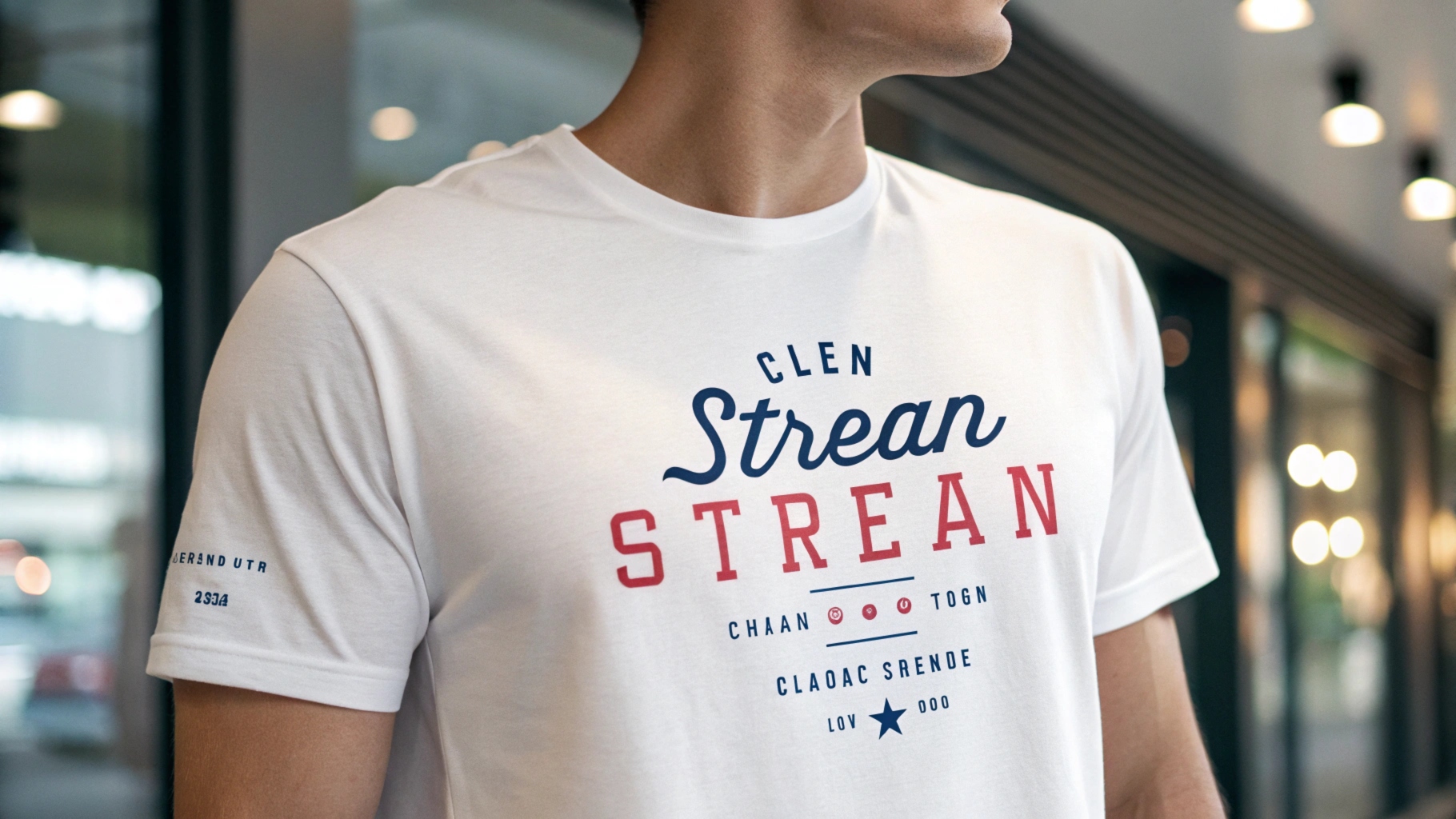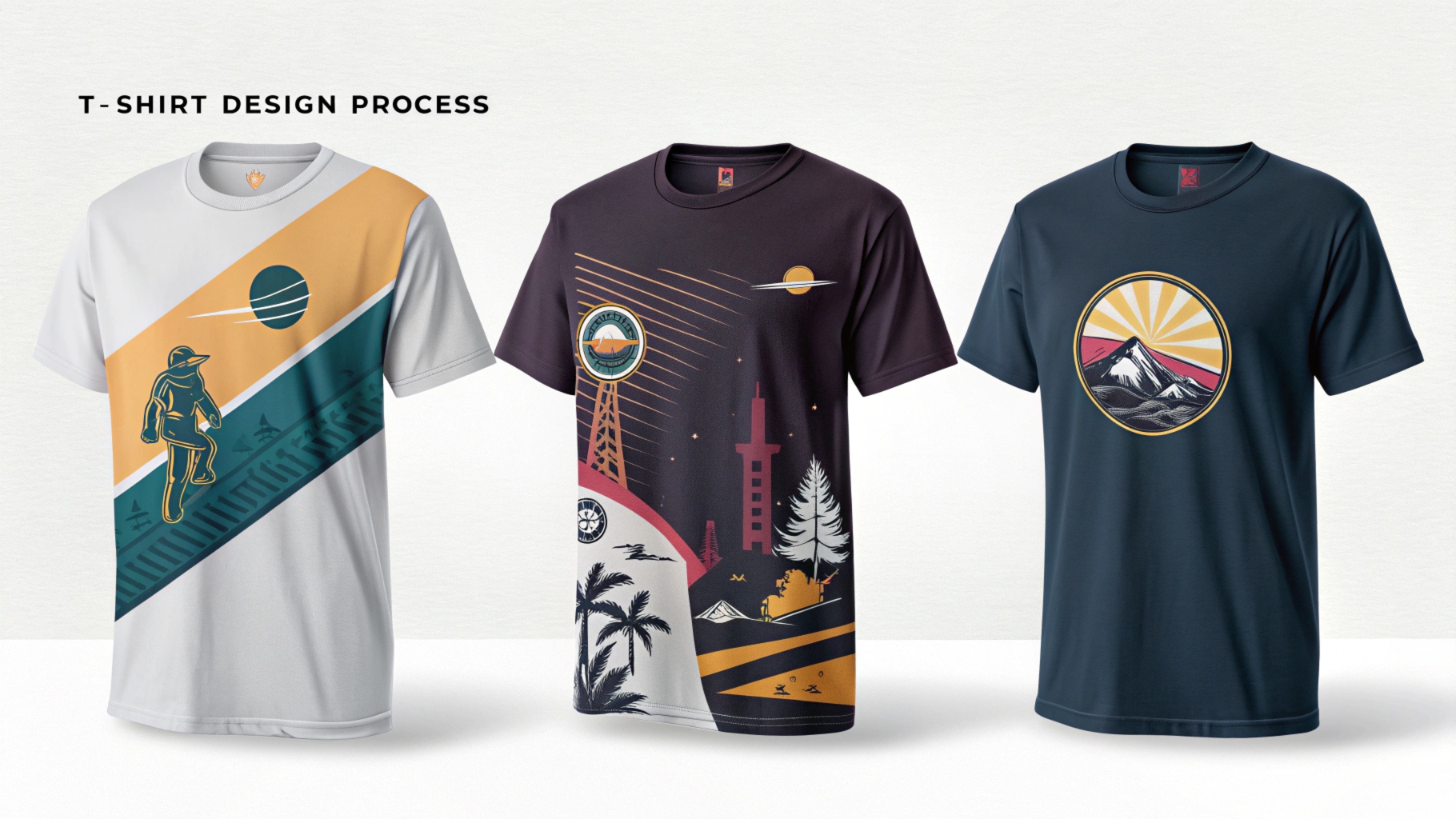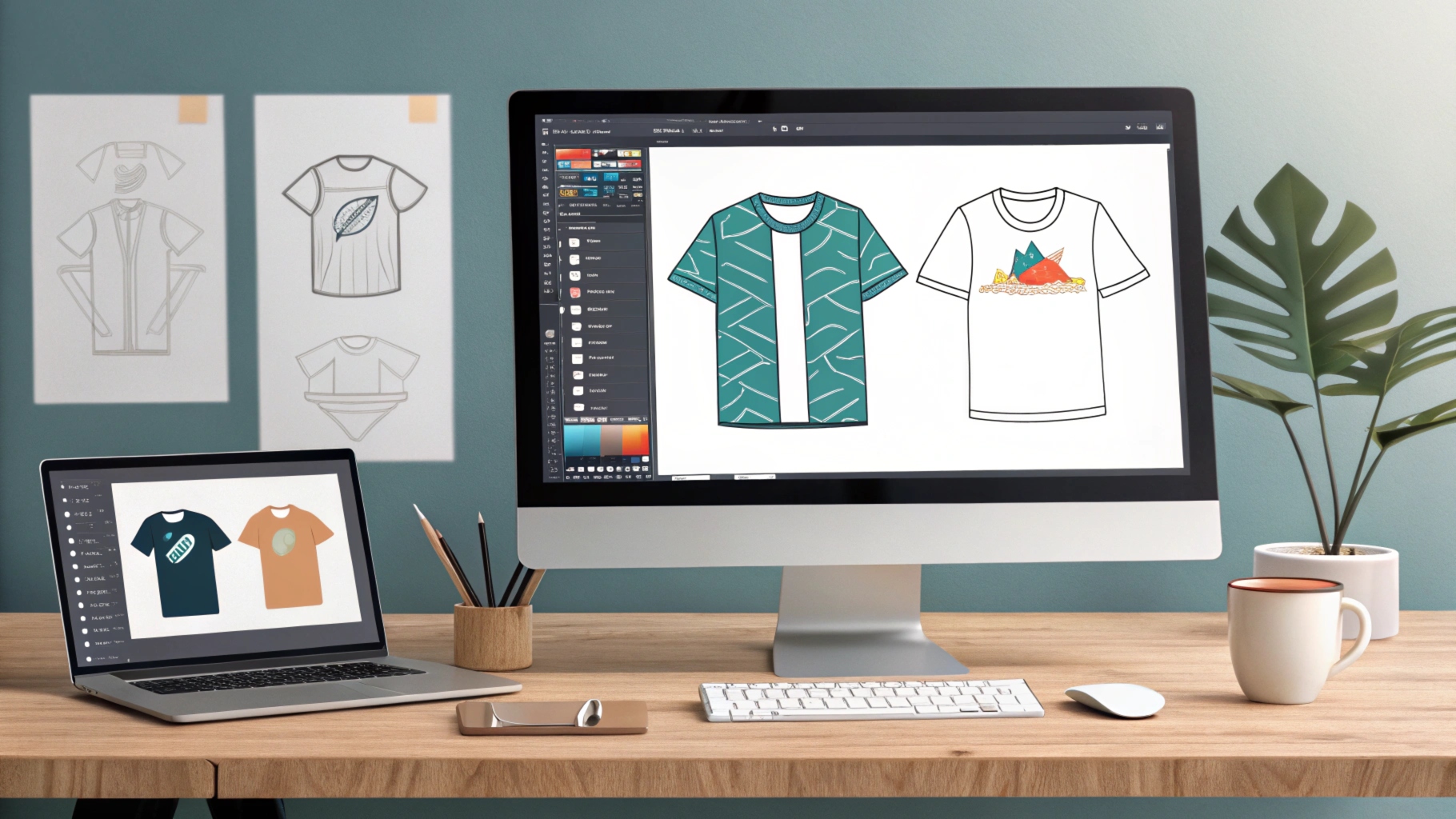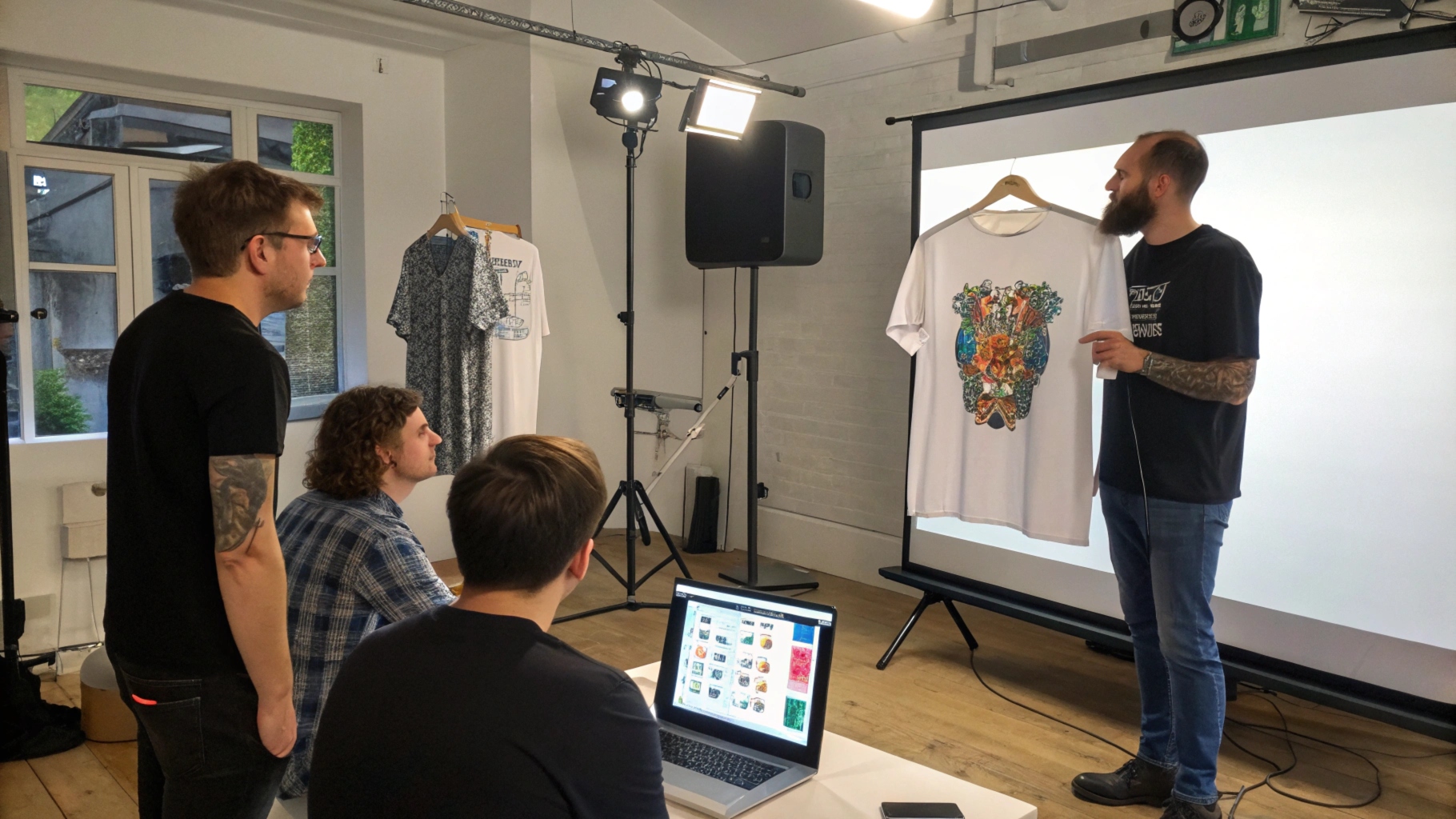Table of contents
What makes a T-shirt design professional?
A professional T-shirt design is more than just a logo or text. It involves a creative process that blends art, branding, and communication. Here are key elements to consider:
1. Simplicity
Keep the design simple and clear. A complex design may not print well, and it could confuse the viewer. A clean, minimalistic design often conveys a strong message.
2. Relevance to Audience
Your design should resonate with your target audience. Consider their interests, culture, and aesthetic preferences to ensure the design appeals to them.
3. Balance and Composition
Ensure that the design elements are well-balanced. Proper composition is key to making the design visually appealing. Avoid overcrowding the design with too many elements.
4. Use of Typography
The font choice should complement the design. Avoid overly decorative fonts; instead, go for readable and stylish fonts that match your brand or theme.

How to choose the right elements for your design?
Choosing the right elements is crucial in creating a standout T-shirt design. Here are some key elements you should consider:
1. Colors
The color palette you choose can evoke different emotions. Bright colors may represent energy and fun, while dark colors may evoke elegance or professionalism. Ensure your colors work well together and fit the message of your design.
2. Graphics and Illustrations
Graphics or illustrations should align with your theme. Whether it’s an abstract design, a portrait, or a graphic icon, make sure the graphic is scalable and printable without losing quality.
3. Logos and Branding
If you’re designing a branded T-shirt, your logo must be prominent but still complement the design. Avoid over-cluttering the design with multiple logos or brand names.
4. Text and Slogans
Text adds an additional layer of messaging to your T-shirt. Slogans or short quotes can add humor, empowerment, or impact. Keep the text short, impactful, and readable from a distance.
Choosing the Right Elements: A Quick Guide
| Element | Importance | Tips |
|---|---|---|
| Colors | Sets the tone and mood | Use complementary colors that work well together. |
| Graphics | Provides visual interest | Choose scalable graphics to avoid pixelation. |
| Logos | Identifies the brand | Ensure your logo is clear and integrates smoothly into the design. |
| Text | Conveys the message | Keep the text legible and aligned with the design’s style. |

What design tools should you use for creating T-shirt designs?
Using the right design tools can streamline your creative process and help you produce high-quality designs. Below are some popular tools:
1. Adobe Illustrator
Adobe Illustrator is one of the industry-standard tools for T-shirt design. It’s ideal for creating vector-based designs, which can be scaled up or down without losing quality.
2. Adobe Photoshop
Photoshop is perfect for designing detailed, pixel-based designs. It’s especially useful for photo manipulation and creating intricate patterns.
3. Canva
If you’re looking for a more user-friendly and budget-friendly option, Canva is a great choice. It offers a variety of templates and easy-to-use tools to create professional-looking designs.
4. CorelDRAW
CorelDRAW is another popular vector-based design software used by many T-shirt designers. It’s particularly known for its ease of use and powerful drawing tools.
Design Tool Comparison
| Tool | Best For | Cost |
|---|---|---|
| Adobe Illustrator | Professional vector-based designs | $20.99/month |
| Adobe Photoshop | Photo manipulation, pixel-based designs | $20.99/month |
| Canva | Simple, quick designs for beginners | Free, Pro version $12.95/month |
| CorelDRAW | Vector designs and illustration | $249/year |

How to test and finalize your T-shirt design?
Once you have created your T-shirt design, testing it is an essential step before finalizing it for production. Here are the key steps to test your design:
1. Create Mockups
Use design software to create a mockup of your T-shirt. This will help you visualize how your design will look on an actual shirt and adjust it if necessary.
2. Get Feedback
Share your design with others to get feedback. Ask for honest opinions about the design’s appeal, message, and readability.
3. Test Different Print Methods
Try different printing methods (e.g., screen printing, DTG) on various materials to see which produces the best result for your design.
4. Finalize Your Design
Once you’re satisfied with the mockups and feedback, finalize the design by ensuring it’s in the correct file format for production (usually vector files like .ai or .eps).

Post time: Dec-20-2024







